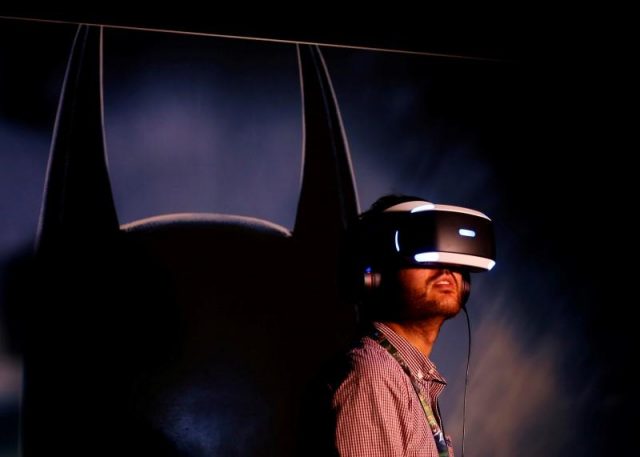Virtual reality games might help ease pain not just by distracting players from what ails them, but also by triggering changes in the brain, a recent research review suggests.
Distraction may indeed play a role in pain relief, the review of six small studies suggests. But it’s also possible that the technology could help produce changes in the nervous system when it’s used to help reprogram how a person responds to pain.
“Guided imagery has long been a treatment for psychological disorders, and virtual reality is a more immersive way to provide guided imagery,” said lead study author Dr. Anita Gupta of the Woodrow Wilson School of Public and International Affairs at Princeton University in New Jersey.
“More research is needed to tell if virtual reality is truly effective, but having more options to treat pain is promising,” Gupta said by email.
Virtual reality technology has been around for decades, first coming to prominence when the military used it for flight simulators. The earliest hardware filled an entire room, but as the technology has become smaller and cheaper to produce, it’s increasingly being used for a variety of medical purposes including wound care, physical therapy, dental pain relief and burn treatment.
Today, mass-produced virtual reality devices may require no more than a smartphone and special headsets to operate, and a growing number of people use these gadgets to play video games and take lifelike, three-dimensional tours of places they might not be able to visit in real life.
For the current study, researchers reviewed articles published from 2000 to 2016 that explored different ways virtual reality might augment pain relief.
Altogether, researchers identified four small experiments that randomly assigned some patients to try virtual reality for pain relief as well as two pilot studies of the technology for this use.
In addition to acute pain, several studies looked at chronic pain states such as headaches or fibromyalgia. These studies also combined virtual reality with other treatments such as biofeedback mechanisms and cognitive behavioral therapy.
Taken together, the results from the small studies in the current analysis suggest that virtual reality might help with what’s known as conditioning and exposure therapy, a form of behavior therapy that involves helping patients change their response to pain when they feel it.
More research in larger groups of patients is needed to draw firm conclusions about how well virtual reality works for pain relief, the authors caution in the journal Pain Medicine.
But the results suggest that virtual reality treatments for chronic pain might help reduce reliance on opioid painkillers and potentially help curb misuse of these addictive medications.
Patients need to understand that virtual reality is just a tool to design treatments, and not a treatment by itself, said Max Ortiz Catalan, a researcher at Chalmers University of Technology in Gothenburg, Sweden, who wasn’t involved in the current study.
“You can’t prescribe virtual reality, but treatments that employ it, and the methods of such treatments are what matters,” he said by email. “Two different methods can use virtual reality and one works while the other doesn’t depending on how virtual reality is used.”
Side effects of virtual reality can include motion sickness, nausea and dizziness, Gupta said.
Still, it’s a non-invasive approach option that is becoming more widely available and more affordable.
“I would certainly try this as part of a traditional treatment plan with routine guidance from a board-certified pain specialist who understands the risks and benefits of all treatments involved and what works best,” Gupta said.










